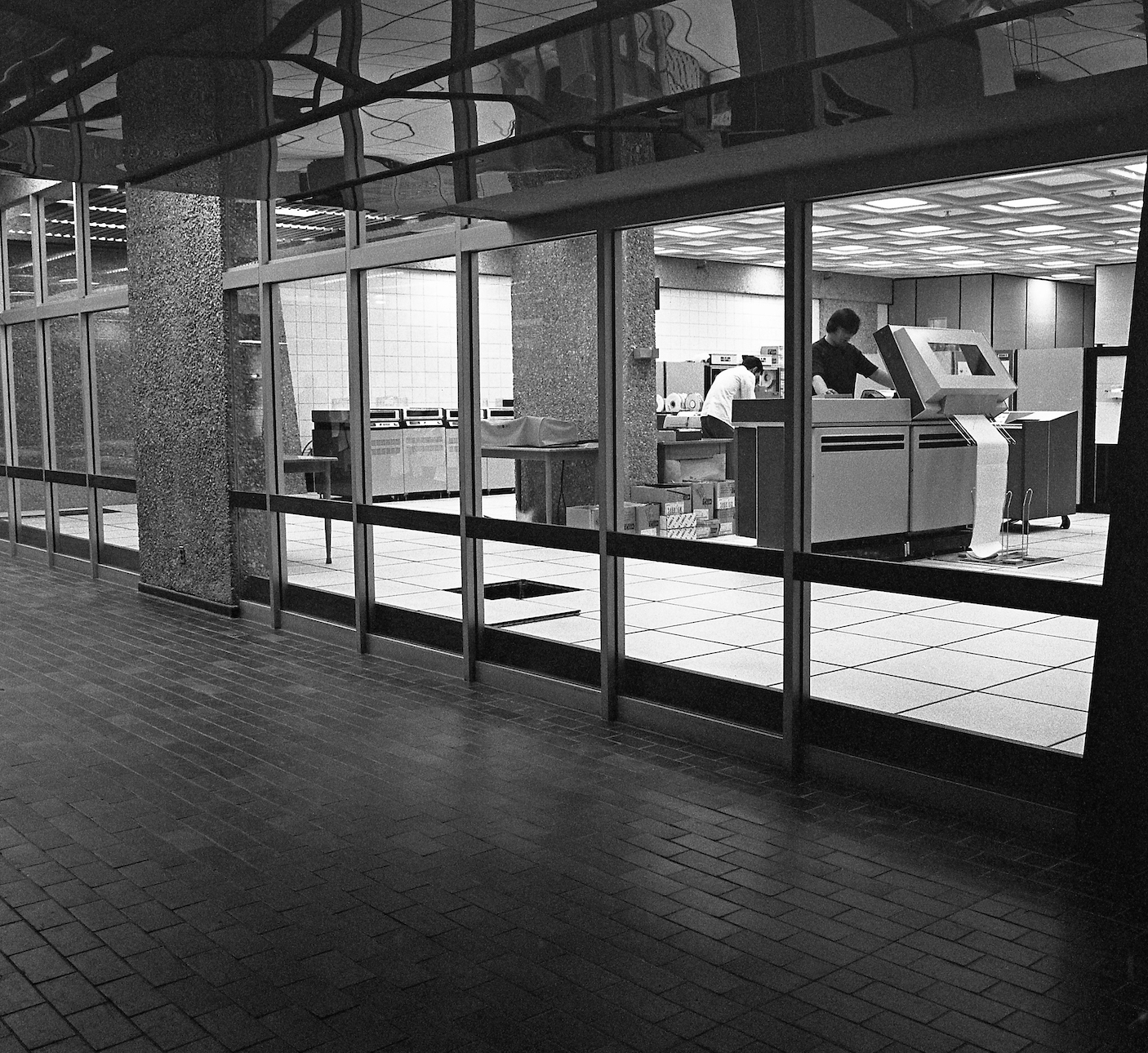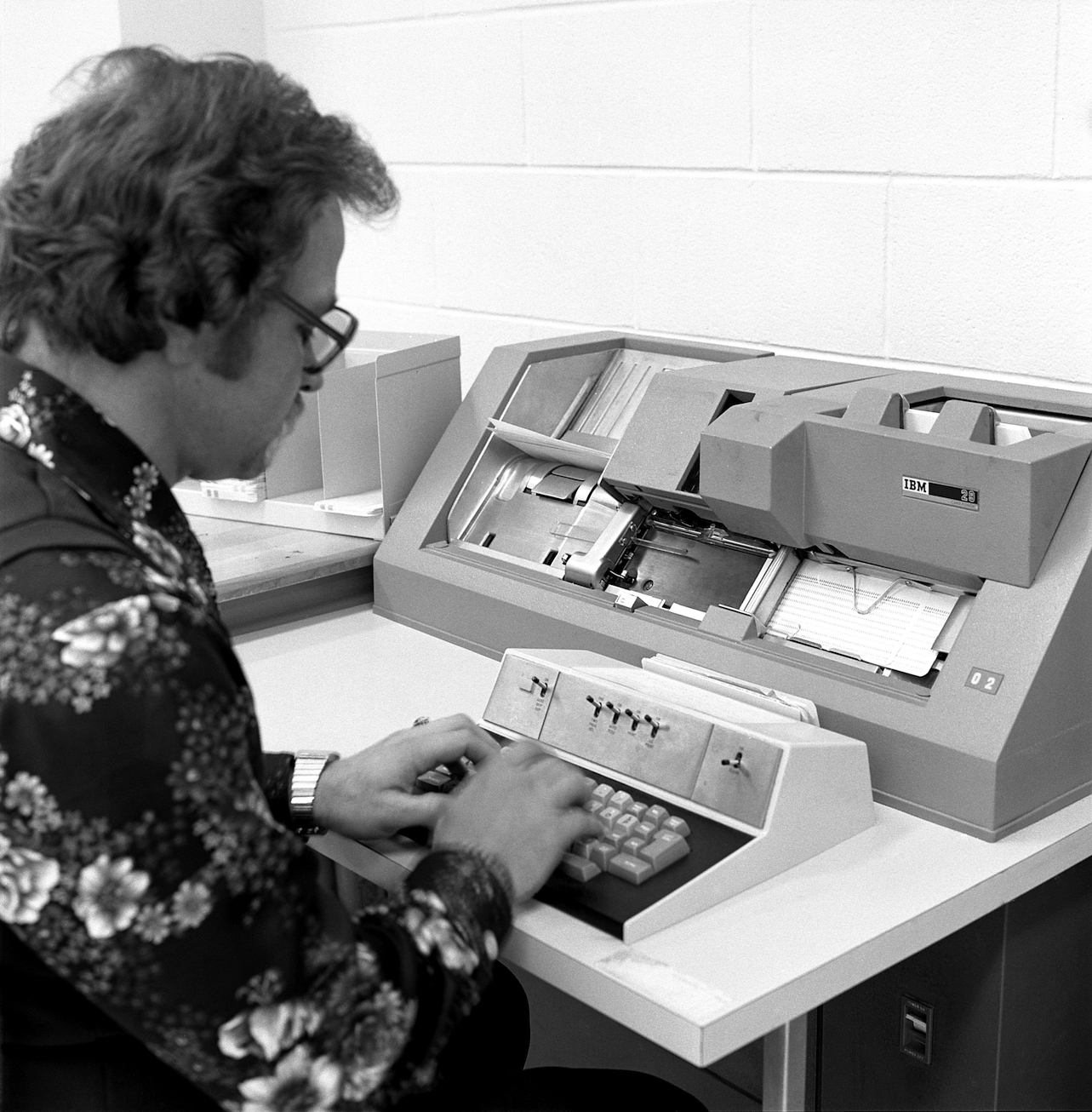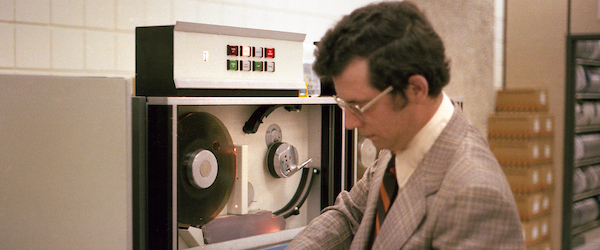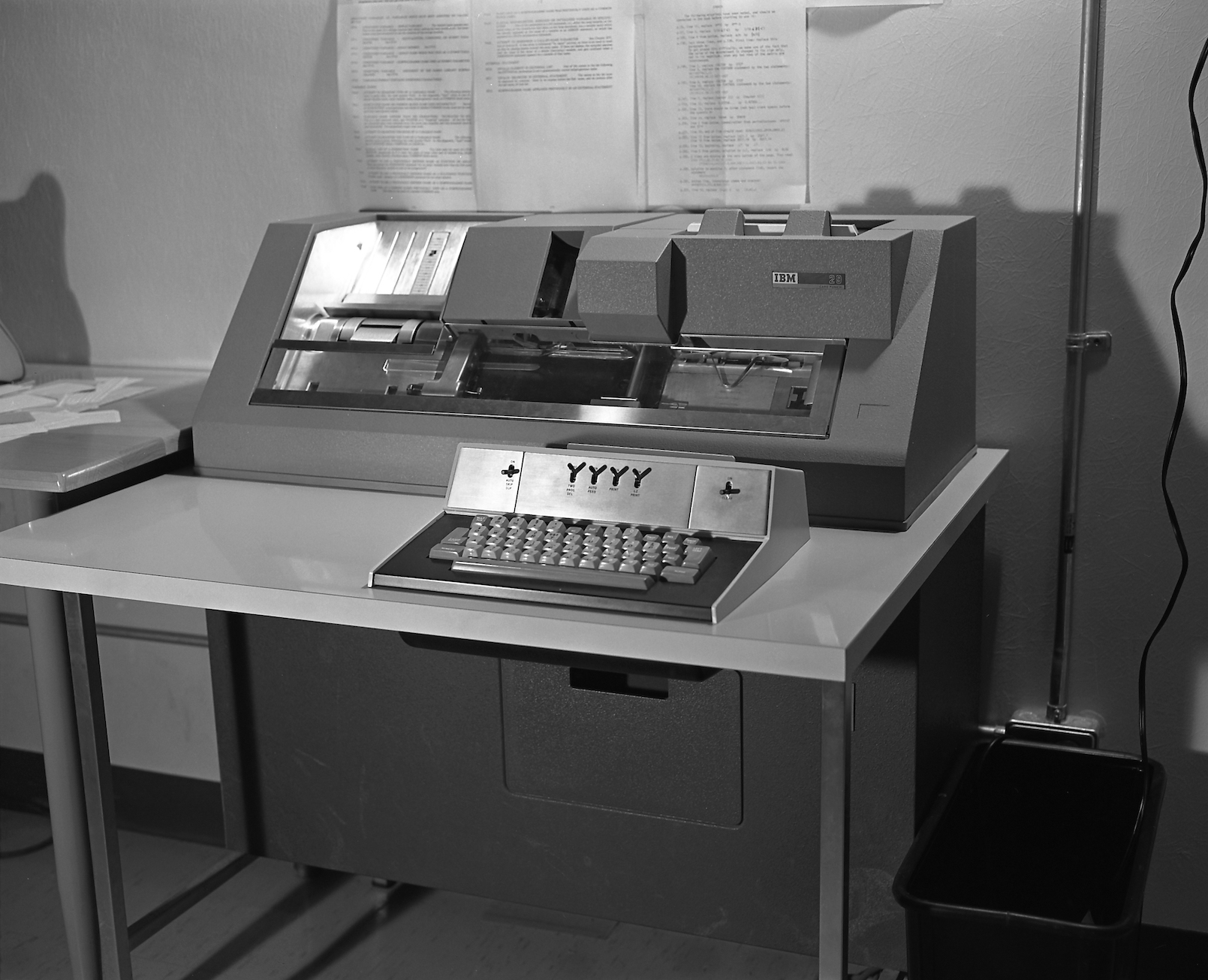In 1971 this card punch was state-of-the-art technology. Photo by the University of Regina Photography Department.
Submitted by:
Nigel Salway
Alumnus, Department of Computer Science
B.Sc. 1979
(Originally published on 10 December 2010 in Your Official U of R blog)
I started at the U of R in fall of 1974. Although I was not initially enrolled in computer science, I took CS200 in the 75W semester. This class was an introduction to computer programming. Students were required to write some short assembler programs and then a number of Fortran programs. The programs were all run on the XEROX Sigma-9 computer.
The Sigma-9 was not owned by the Computer Science Department, but the Department purchased time for a number of classes on the computer. The Sigma-9 was a sophisticated time sharing computer. Programs were input either from punched cards or edited on-line using one of a number of teletype terminals. The Sigma-9 was located in the glass room in the Ad-Hum building on the south side of the corridor leading from the library.

A view into the glass room in the Ad-Hum building (1974). Photo by the University of Regina Photography Department.
Punched cards were once the staple of the computer world, but have now all but disappeared. The cards were 7 3/8″ X 3 ¼” and were made from stiff paper. The cards were designed with 80 columns, each column which could be punched with a series of codes to represent a single letter, symbol or letter. The 80 columns limited the width of a program line and even today controls the width of many on-line files.
Cards were created by using a special device known as a card punch. This device had an input hopper of cards which were then punched using a typewriter-style keyboard as input. A card punch is shown in operation (1978).
The card punches collected the chads of paper in a bin. Computer Science students used those chads as confetti whenever a CS student got married.
 In the east side of the library adjacent to the interface to the Ad Hum building was the terminal room. In this room were located the teletype terminals, the card punches, output bins and a number of Friden mechanical calculators. Hand held calculators had only just become available and cost on the order of $200 each. Students could use these mechanical calculators to assist in their homework.
In the east side of the library adjacent to the interface to the Ad Hum building was the terminal room. In this room were located the teletype terminals, the card punches, output bins and a number of Friden mechanical calculators. Hand held calculators had only just become available and cost on the order of $200 each. Students could use these mechanical calculators to assist in their homework.
On the west side of the Ad-Hum building across the corridor was the input output room containing the card reader, the access door to the computer room and in later years, the student line printer.
Once a program was typed on cards, the card deck was taken to the card reader and read into the system. The CP-V operating system on the Sigma-9 then decided when to run the program and the output was printed on the printer inside the computer room. Every 15 minutes or so, the Sigma-9 operator would bring the output listings from the jobs that had run and put them in the output bins in the terminal room.
The students would then debug the output, update their deck of punched card and then re-submit their program. Working in this fashion, it might be possible to get 3 or 4 program runs per hour.
The Friden mechanical calculators provided an interesting sidelight to life in the terminal room. The calculators had no check for division by zero. If a division by zero was punched into the calculator, it would go into a very noisy mechanical loop until it was cleared. There was someone who would go by the room late at night and set all the calculators into a divide by zero loop. The calculators would continue in their noisy loop for hours until someone came along to clear them.

